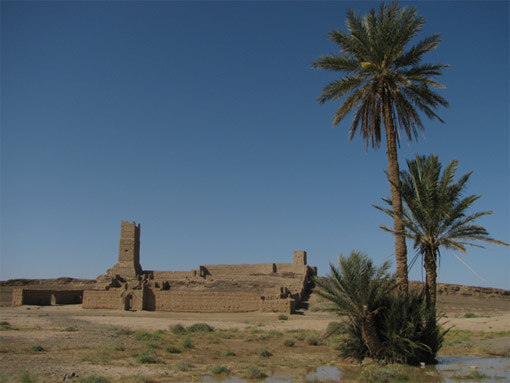The History and Legacy of the Fortresses of the Steppe and the Sahara in Comparative perspective (1840s to today)

Events
The results of this Birmingham-led research project are presented through a series of events nationally and internationally.
- Empires of Emptiness: Fortresses of the Sahara and the Steppe
23 May to 21 September 2016
Jackfield Tile Museum: Footprint Gallery, Fusion Building, Ironbridge TF8 7LJ
- Empires of Emptiness: Fortresses of the Sahara and the Steppe
15 February to 15 May 2016
Aston Webb Rotunda, 1st Floor, Aston Webb Building, University of Birmingham
Monday to Friday, 9:00 - 17:00, free entry
University Square/Chancellors Court, University of Birmingham
Open access outdoor exhibition
- Akounak tedaiat taha tazoughai
17 March 2016, 12:30-13:20
mac birmingham - Cannon Hill Park Edgbaston, Birmingham
- Picnic in the desert
17 March 2016, 12:30-13:20
Aston Webb Rotunda, 1st Floor, Aston Webb Building, University of Birmingham
The project
Overly-theoretical interpretations of European imperialism sometimes lead historians to forget the realities of colonial expansion and rule. This project seeks to correct this imbalance by looking at one of the most visible expressions of imperial power: the fortresses which proved to be key to the actual control of the lands coveted by Russia in Central Asia ('Great Game') and France in the Sahara ('Scramble for Africa').
The extension of lines of communication is a major weakness of conquering armies, especially when they operate in vast and sparsely populated areas such as the steppe or the Sahara. Consequently, fortresses initially designed to allow troops to rest and resupply sheltered from local enemy forces could easily become administrative centres designed to project the might of the new masters and impress indigenous populations. However, this was not always the case: some simply fell into decay once the conquest had taken place, because they were no longer strategically important once positions elsewhere had been strengthened.
In Russia, the process began with the construction of the Irgiz and Turgai fortifications in 1845, in response to the revolt of the Kazakh leader Kenesary Kasimov. Fort Raim (1847) near the mouth of the Syr-Darya was the first fortress of what became known as the 'Syr-Darya Line' of fortifications stretching through Kazalinsk to Aq-Masjid, upon which the Russians attempted (unsuccessfully) to build a stable frontier over the next twenty years. Simultaneously they were building a 'Siberian Line' of forts in the east, stretching down from Semipalatinsk through Kopal to the valley of Almaty. In the early 1860s, the two lines of fortresses were united, culminating in the fall of Tashkent in 1865, which marked the beginning of a new phase of the conquest, as the Russians moved from the steppe into the riverine oases of Turkestan.
In Algeria, the French were initially reluctant to penetrate deeper into the Sahara desert, having long questioned the real value of their colony of Algeria. However, the constant need to protect existing settlements or local allies from dissident activity meant that by the early 1890s, the French had built their first Saharan forts along a line of key strategic oases which gave them some control over trans-Saharan trade routes. As the conquest of West Africa progressed, a series of new fortresses accompanied the gradual seizure of the last expanses of land which still evaded French control: territories traditionally controlled by the Chaamba were taken at the turn of the century (1899-1905), paving the way to the seizure of the lands of the most powerful 'warlords of the desert', the Tuaregs, from 1900 to 1916. French mastery of the Sahara was fully achieved in the 1920s and 30s, when the last posts were set up in the middle of the oceans of sand of the Erg Chech.
These two instances of Imperial expansion are the pre-eminent example of European Imperialism in nomadic societies, and two of the most important examples of European expansion in the Islamic world. Furthermore, they both represent the conquest of territory of marginal economic value to the conquering power, and thus offer an excellent opportunity of applying theories of Imperial expansion developed in the study of the British empire to less well-known cases.
This project assesses both the historical significance of these 'outposts of conquest', their place in post-colonial Central Asia and North Africa, where they still remain powerful symbolic reminders of the colonial past, and their relationship with a harsh environment. Despite their importance in the process of military expansion, these fortresses have never been the subject of an academic study, and this project will bridge a major historiographical gap. Combining archival research with physical and photographic surveys, it will produce a comparative analysis of the past development and modern legacies of two major imperial strategies.
[© Photo Berny Sèbe]